This Japanese-Inspired Method For Truly Flawless Iced Coffee Is My New Go-To — Like, American Cold Brew Could Never Compare
American cold brew doesn't even compare.
It's officially iced coffee season, folks, and I'll be damned if I let even a single sip of hot coffee touch my lips before fall rolls around. But even though the current wave of inflation seems to be cooling down, little by little, my wallet simply cannot handle the number of coffee shop visits that it used to.
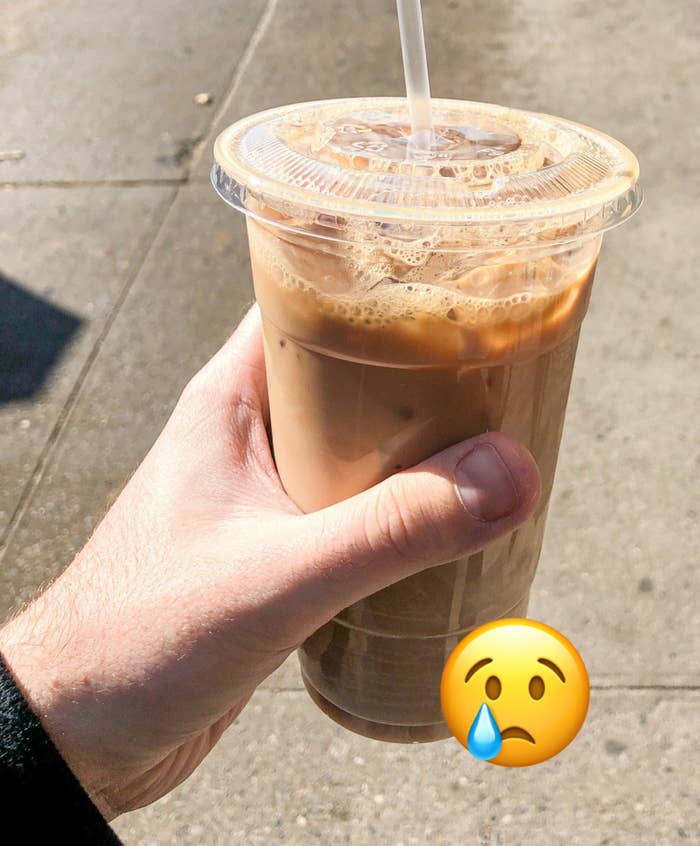
In an effort to save some cash, I've been somberly researching my at-home iced coffee options. DIY cold brew? That was fun for about two days, but as someone who can't even pack a suitcase until the very last minute, planning my morning coffee 24 hours in advance was a non-starter. Then there's my usual method of stashing the entire pot of brewed coffee in the fridge until it's cold. Listen, for a food writer whose life basically revolves around food, I'm famously unfussy about my coffee...but that cloudy, bitter, leftover coffee was never gonna cut it.

As I do to mitigate many of my issues these days, I quickly found my way to TikTok, where it didn't take long for me to rediscover an iced coffee method that I'd totally heard of before (but never really thought to try): Japanese-style iced coffee.
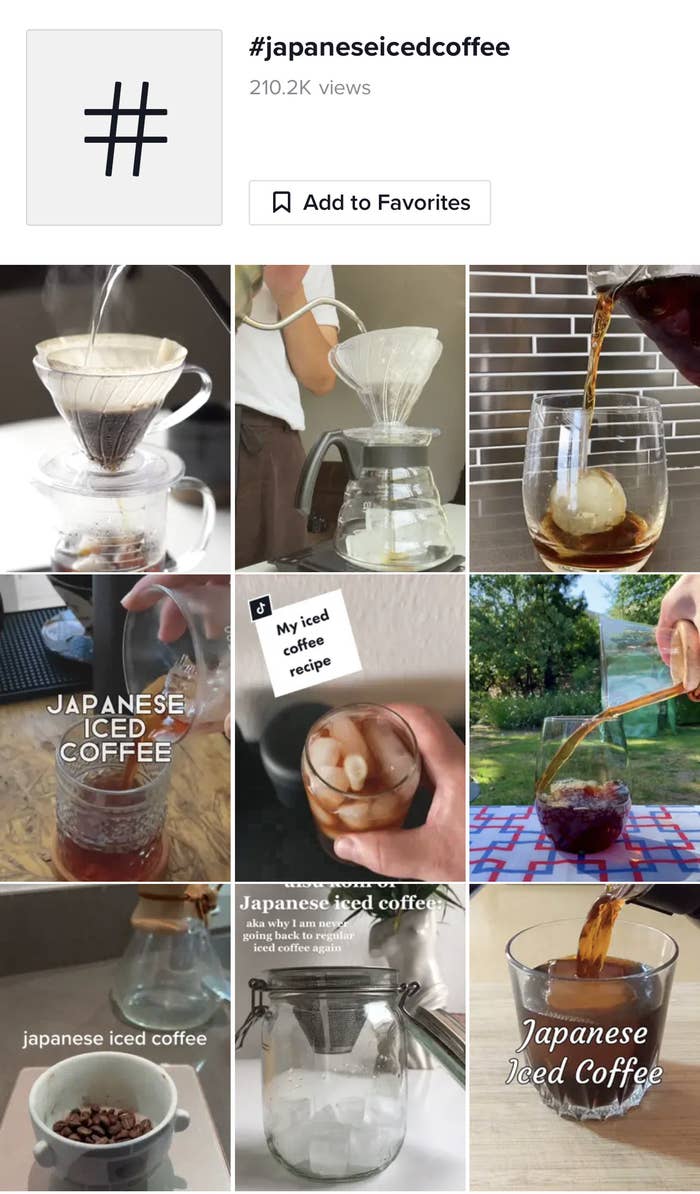
The method itself produces a cup of coffee that's robust in flavor, yet still as velvety smooth as a cold brew. In fact, the flavor notes are known to be even more pronounced than in cold brew, which can occasionally taste a bit muted. Translation: It's a seriously delicious way to prepare iced coffee — so delicious, in fact, that a friend of mine even claims it's "the reason she started drinking coffee" while spending time in Japan. And y'all, I tried it for myself in my own home, and I've been hooked ever since.
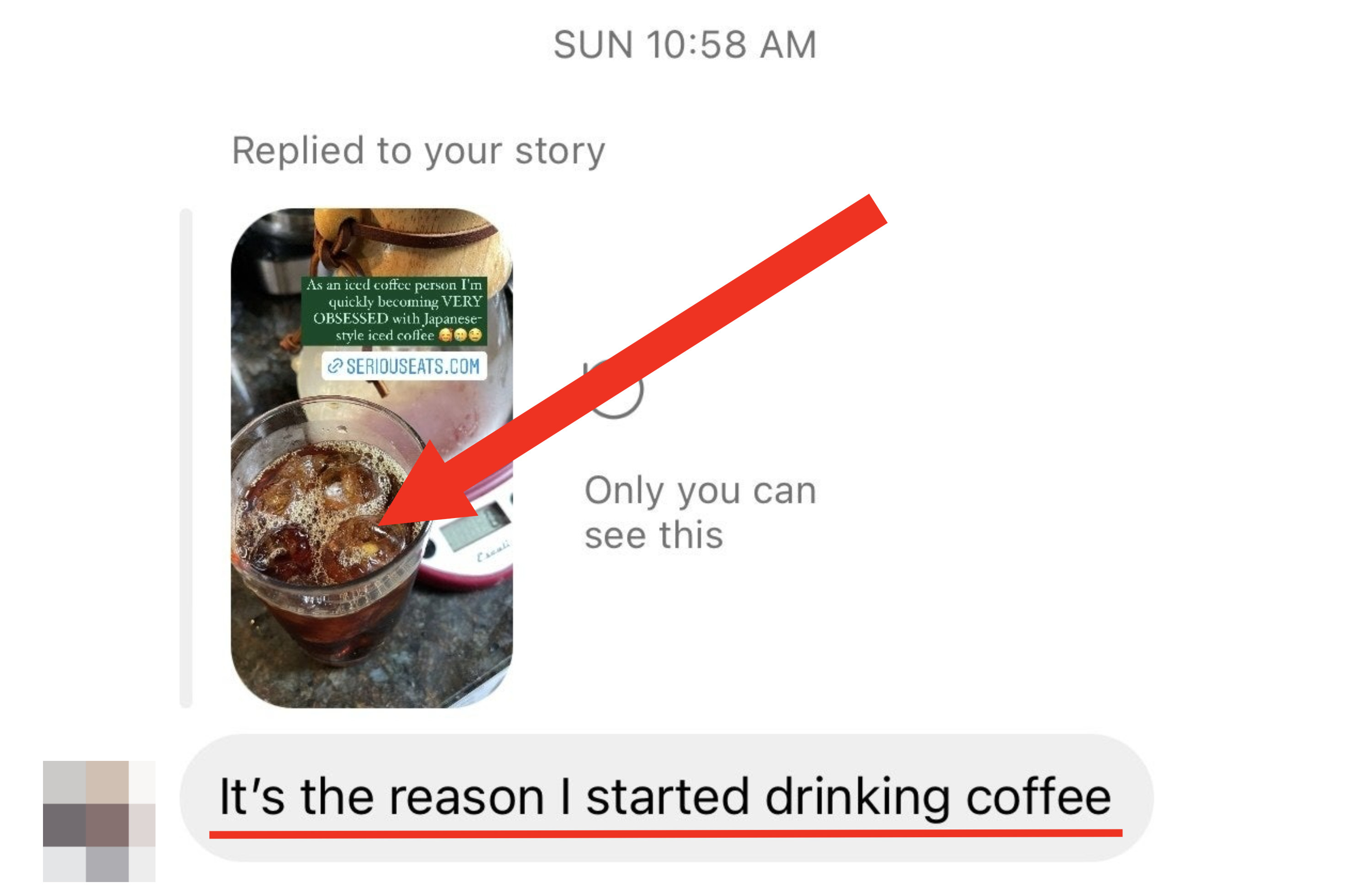
I'll be the first to admit that when we start to enter the territory of pour-over coffees and "artisanal" this or that, the coffee snob culture of it all can start to feel reaaally pretentious really fast. So in an effort to make this as user-friendly as humanly possible, I'm gonna give you multiple pathways for arriving at the same, delicious result: one for the folks who like to measure everything with precision, and another for those of you who don't feel the need to get all that granular.
WHAT YOU'LL NEED:
To make Japanese-style iced coffee the traditional way, you'll need one of the myriad devices that exist for making pour-over coffee — basically, any sort of device that allows you to manually pour hot water over coffee grounds and into a holding vessel. I personally use a Chemex, but you can pretty much use any other pour-over dripper placed over a vessel large enough to hold the final brew, like this budget-friendly V60 dripper. Just make sure you're using a proper paper filter so your batch of iced coffee will be free of any sediment or cloudiness.
In addition to the pour-over device of your choosing, you'll need a properly sized paper filter, ice, a kettle, and, of course, coffee. While having a scale that measures in grams is also preferred, it's not entirely necessary. If you don't have one, rest assured I'll also provide the quantities in good old cups and tablespoons where applicable.

HOW TO MAKE IT:
With the exception of the hands-off process of actually heating the water, a batch of Japanese-style iced coffee comes together in under five minutes. This recipe yields about two generously sized glasses of iced coffee, so feel free to adjust the ratios up or down depending on how much you need to make in the first place.
STEP 1: Bring your kettle of water to a near boil.
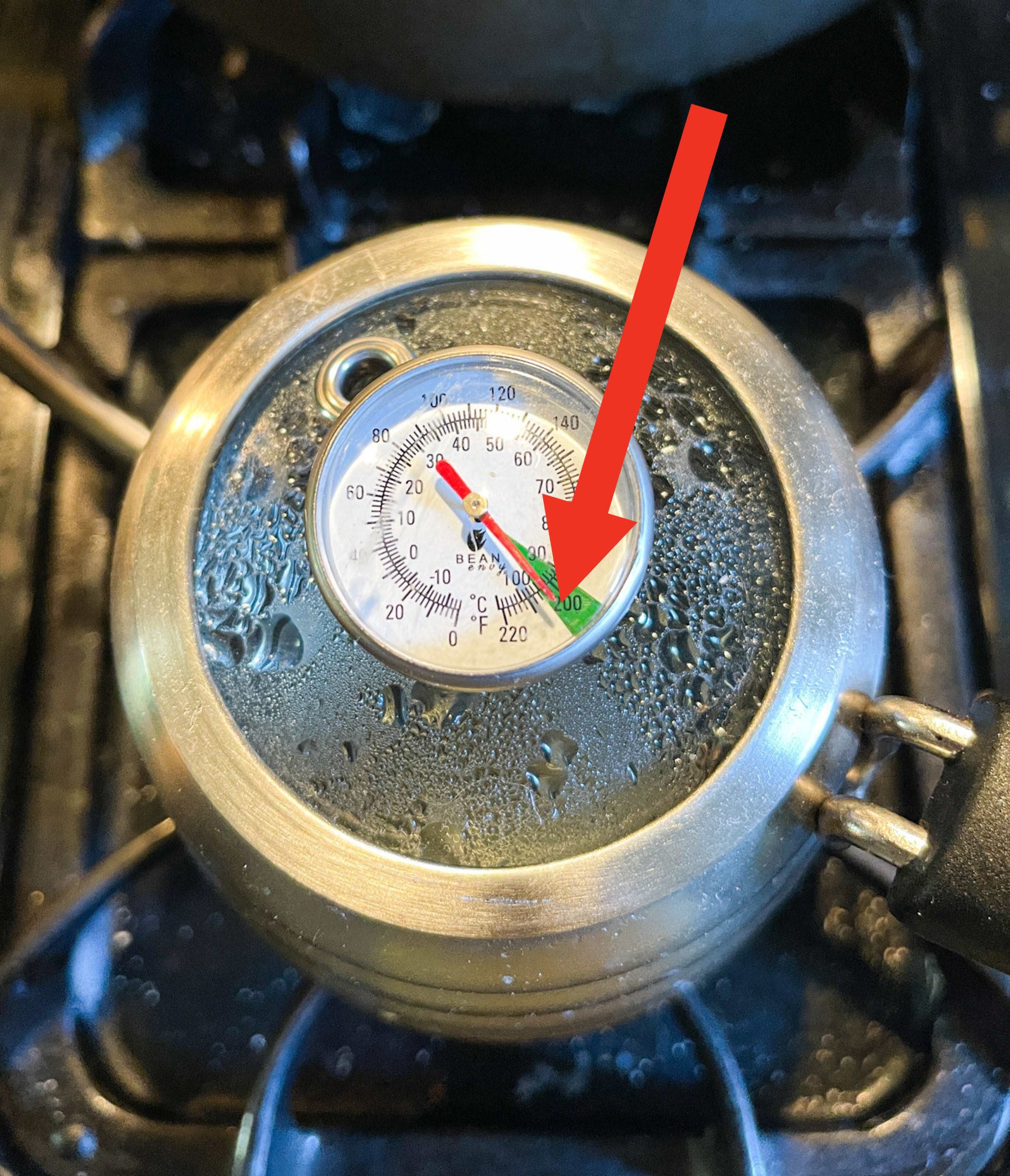
STEP 2: Fill the bottom of your coffee vessel with ice.
STEP 3: Measure and grind your coffee.
STEP 4: Prepare the pour-over vessel.
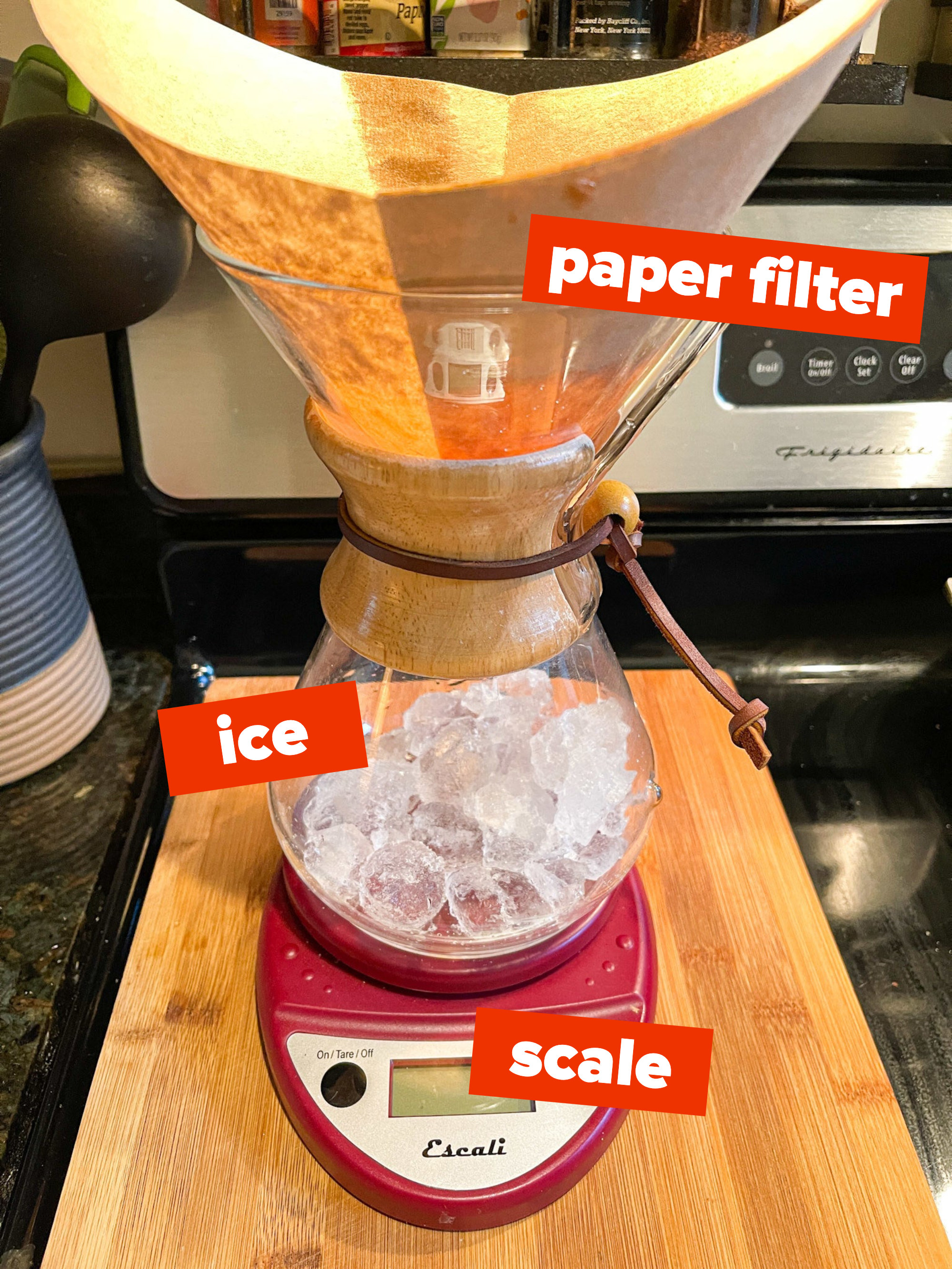
STEP 5: Brew!
And that's really it! You'll notice that the vast majority of the ice has melted and quickly cooled the hot coffee. I like to give the flash-chilled coffee a good swirl (to make sure things are as cold as possible), and then you're ready to serve. Pour the Japanese-style iced coffee into glasses with fresh ice and drink it up.
THE VERDICT: Brewing Japanese-style iced coffee produces coffee that's rich, boldly flavored, and suuuuper smooth — and while you could certainly argue that cold brew coffee is just as drinkable, I'd say that the former excels significantly when it comes to taste. IMO, cold brew can sometimes taste a little bit watered down, but not Japanese-style iced coffee. Add in the fact that it's even more cost-efficient and requires zero planning whatsoever, and I can confidently say it's become my new go-to method.
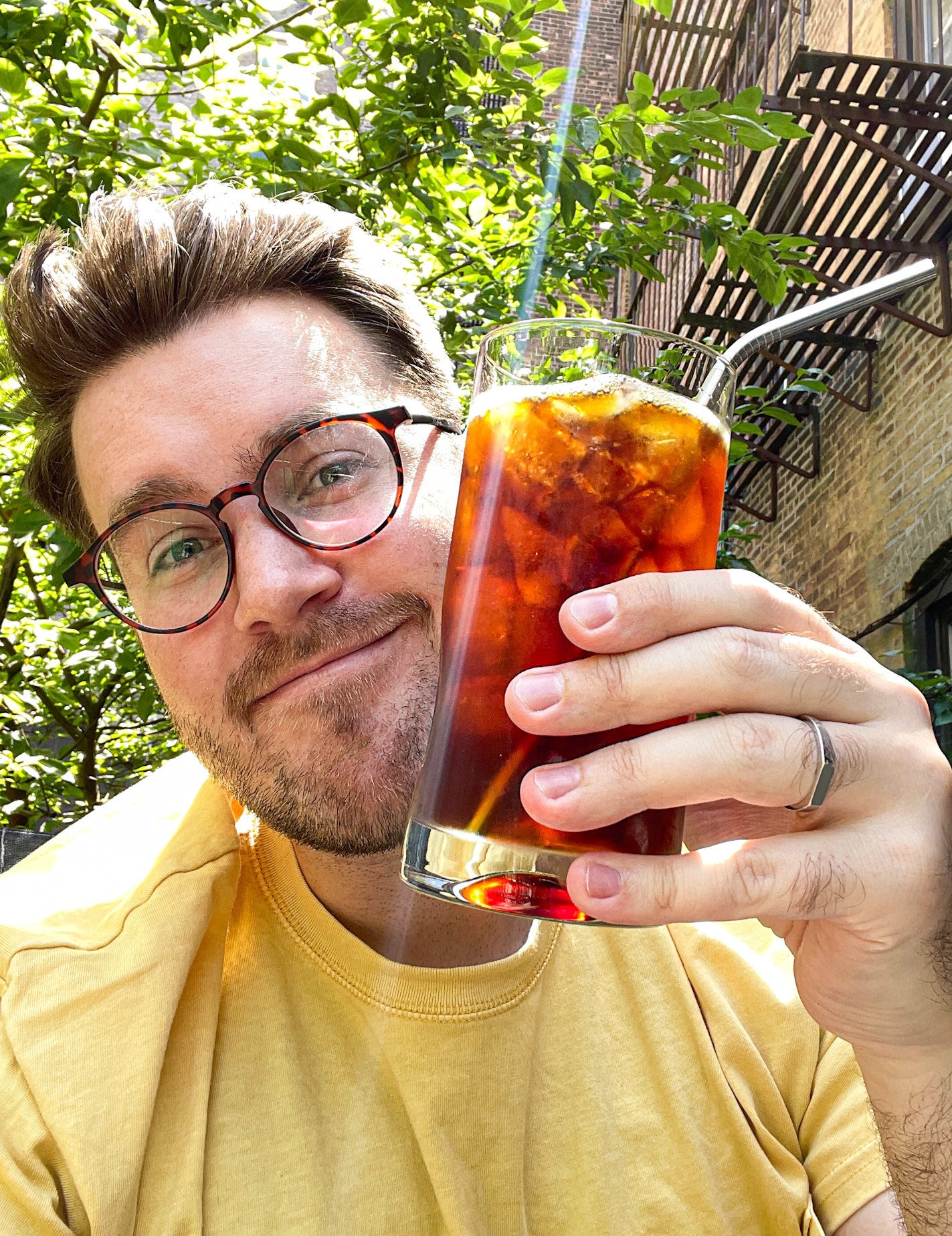
I told you I'd leave you with the lowest-effort method for making an iced coffee that's similar to the directions above, and I'm keeping my promise. For this method, you'll use your standard drip coffee-maker — no frills necessary.
Big disclaimer here: You might need to mess around with the ratios a bit, depending on how the first batch tastes. That's because standard drip coffee machines don't extract from the coffee grounds nearly as evenly as the pour-over method, and the water itself tends to be much hotter. Both factors contribute to a very possible reality that your brew will end up stronger and more bitter than the traditional Japanese-style method would.
That said, start with the exact quantities of coffee grounds and water above, and you'll pretty much brew your coffee the same way you normally would. The only exception? You'll add the listed amount of ice to the coffee pot before you hit "brew," so the hot coffee will chill instantly as it brews.
I can't promise that the results will be as downright delicious as when you make it the traditional way (technically, I can almost assure you that it won't be as good), but if you're as unfussy about your coffee as I am, I'm sure you'll agree that it's just as tasty as a fresh batch of cold brew, made with just a fraction of the effort and time.
If you've ever tried Japanese-style iced coffee (or if you're tempted to make it yourself after reading this post), let me know what you thought of it in the comments below! 👇
And if you have a secret method of making iced coffee that you absolutely swear by, tell me about it. I'm all ears!
